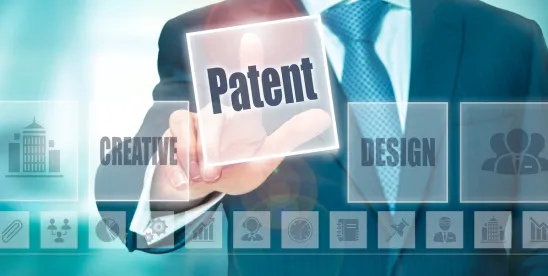From the U.S. Supreme Court’s perspective, its Mayo and Alice decisions from 2012 and 2014, respectively, are still sufficient to govern patent law’s § 101 analysis. This inference stems in-part of the Supreme Court’s cert denial in 2023 of both Tropp v. Travel Sentry, Inc. and Interactive Wearables, LLC v. Polar Electro Oy, both of which sought clarification of 35 U.S.C. § 101.
Despite this, today the US Patent and Trademark Office (USPTO) issued updated guidance (“the Guidance”) on § 101, with a “tip-of-the-hat” to artificial intelligence (AI). This comes over five years since the last § 101 guidance. Prompted by President Biden’s Executive Order 14110, the Guidance addresses the interplay of § 101 and AI inventions; further, it incorporates stakeholder feedback to clarify Step 2A of the subject matter eligibility analysis.
Step 2A
As put forth in the Guidance, the USPTO has been “monitoring subject matter eligibility development in the courts, soliciting input from stakeholders, and issuing examination guidance.” Under current § 101 analyses, Step 1 of the test determines whether a claimed invention falls into one of four enumerated categories: process, machine, manufacture, or composition of matter. If the answer to Step 1 is “NO,” the analysis proceeds to Step 2, known as the Alice/Mayo framework, a two-pronged test. First asking whether the claim recites an abstract idea, law of nature, or natural phenomenon (the “judicial exceptions”, and if so, asking whether the claim recites additional elements that transform the claim beyond the judicial exception (i.e., an “inventive concept”). The flow chart from the USPTO’s Manual of Patent Examining Procedure (below) is particularly helpful. So what is changing? Well…nothing.

The Guidance looks to clarify two areas of particular concern: whether a claim recites an abstract idea, and whether a claim recites a practical application for a judicial exception, both areas of the § 101 analysis that are cause for concern for AI inventions. On the former, the USPTO emphasizes the distinction between claims that “recite” abstract ideas and those that merely involve an abstract idea. Illustrative examples of this analysis can be found in MPEP 2106.04(a)(1). Illustrative areas where this distinction is key, especially with AI inventions, are mathematical concepts, certain methods of organizing human activity, and mental processes.
On whether a claim integrates a judicial exception into a practical application, the USPTO and courts consider, for example, “whether the additional elements improve the functioning of a computer or another technology, whether the claim generally links the judicial exception to a
particular technological environment or field of use, or whether there is a step in the claim that applies or uses the judicial exception to effect a particular treatment or prophylaxis for a disease or medical condition.” However, the analysis specifically excludes additional elements that are “well-understood,” “routine,” or “conventional.”
AI Efforts
How does this apply to AI-assisted inventions? The Guidance specifically rejects the notion that the assistance of AI in developing a claimed invention plays a role in the § 101 eligibility test. Based on previous guidance, AI-assisted inventions are eligible for patenting, generally speaking, so long as one or more people made significant contributions to the invention. Thus, the subject matter eligibility analysis will continue as normal, irrespective of the assistance of AI in the invention, to determine whether the type of innovation is eligible, not the method of innovation. The analysis, in both AI and non-AI inventions, is largely fact specific, but the USPTO has developed three new examples to help understand how the § 101 analysis may apply to AI-assisted inventions.
Conclusion
For now, the convoluted § 101 analysis used by the USPTO and courts remains the same. Fortunately for inventors, the assistance of AI in and of itself will not serve as a hinderance in the subject matter eligibility discussion. Although Step 2 of the test may be the greatest obstacle, a claimed invention that merely involves, rather than recites, an abstract idea, for example, or that includes additional, transformative elements may survive the § 101 analysis, whether or not AI assisted the inventive process.





 />i
/>i
